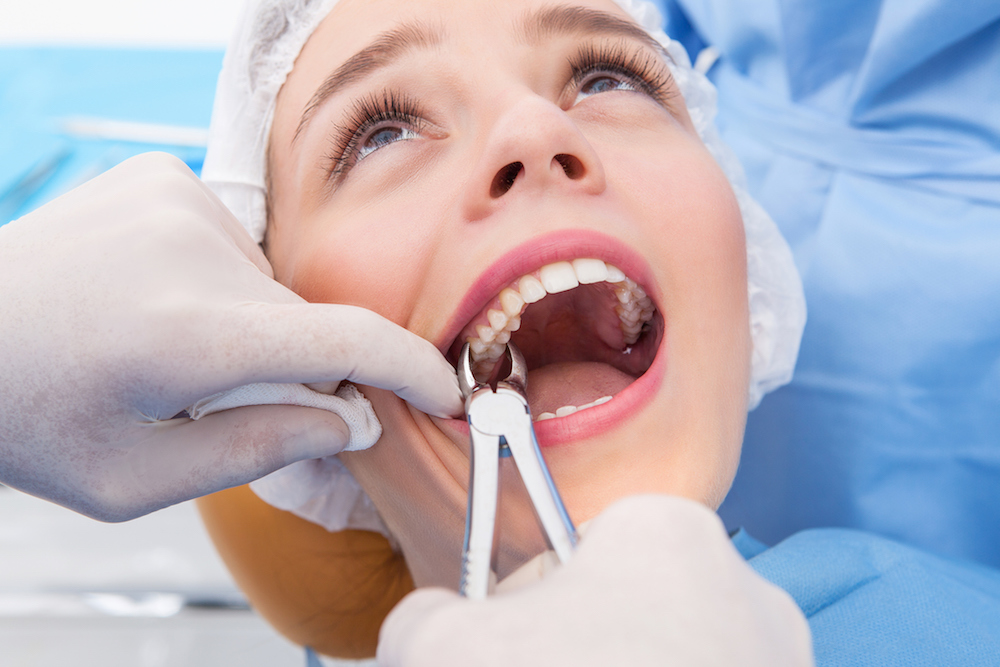There are several ways to perform that type of dental work, and you’re already familiar with most of them. One of the dental injections will take place during the procedure. Nevertheless, it is possible that the patient’s tooth or surrounding tissues have not been adequately numbed. Dental problems are not the dentist’s intention – something you’ll discover when looking for dental solutions near me -they happen due to statistics.
Although a certain percentage of patients may require further anesthesia, dentists follow a protocol to test and assess their patients’ condition before actually removing their teeth. Consequently, the amount of pain felt will be kept to a bare minimum.
Depending on the position of wisdom teeth, they may need to be extracted by dental solutions in manhattan. Sometimes, it’s horizontal, leading to food becoming lodged between two molars, which causes decay in the second molar.
As a result, the gums that cover the wisdom teeth easily become infected due to the increased lodging of food that we cannot clean. In upper wisdom teeth, it mostly impinges our cheeks frequently, causing ulcers; hard to clean this tooth on the buccal portion (cheek surface), which is why decay occurs more often.
We will save wisdom teeth if it helps us in chewing or as a support to false teeth. Injecting numbing medication into specific areas is something that your dentist knows. They will question you and test you to ensure they have covered these areas.
Tips to keep in mind
An extraction’s success depends on how well the patient takes care of themselves after treatment. As much as it is the dentist’s responsibility to perform a painless surgery/extraction, it is also the patient’s responsibility to prevent further complications.
DO’s:
- Follow the dentist’s instructions for leaving the cotton on the extraction site for about an hour or two.
- After removing the cotton pack, eat something cold to soothe the area, such as ice cream or a cold beverage.
- To avoid traumatizing the operation site, you should consume soft food that does not require a lot of chewing, especially from the opposite side (from the extraction site).
- Place an ice pack on the area from outside if there is swelling (which happens in a few cases) or mild discomfort.
- When pain occurs (which occurs quite often after the anesthesia wears off), your dentist will prescribe pain killers.
- Timed medications are a must (if your dentist feels it is necessary, he may prescribe an antibiotic and pain-killer).
Next, let’s discuss the strict DON’Ts:
- Keep the cotton pack on the extracted area for at least one hour before removing it.
- It is not recommended to eat or drink anything extremely hot, as it may irritate the newly operated area.
- Certain hard, sticky foods might irritate the area and cause it to heal more slowly. Eating hard food will also poke the wound, slowing healing.
- After extracting the tooth, avoid brushing the extracted site, and if it is difficult, wait a day before brushing again. Maintain a germ-free mouth by using mouthwash instead.
- If you spit forcefully, you could dislodge the blood clot. Although it may seem gross, the blood clots must be placed correctly to ensure efficient healing, and forceful spitting or gargling can move them.
- It is better to swallow a lot of spit than to throw it out since throwing it out may displace the blood clot.
Other things to consider:
Contact your dentist at the earliest opportunity if you notice any further complications, such as excessive bleeding from the site. The majority of the time, complications do not arise. However, in rare cases, complications may occur.
Until the day following surgery, no rinsing should be performed. On the night before surgery, brush your teeth gently and rinse gently afterward. You should begin gently rinsing your mouth at least five times a day, especially after eating, either with warm water mixed with a teaspoon of salt (if you were prescribed that) or Peridex (if you were).
Take the antibiotics according to instructions if you are on antibiotics. Infections are prevented with antibiotics. Antibiotic usage should be stopped if a rash appears or if you experience any other unfavorable side effects.
Sips of water, ginger ale, or coke should suffice. Drink gently over fifteen minutes. You can restart eating solid food and taking prescribed medication after nausea subsides. Please call our office for further suggestions if nausea and vomiting persist after the first postoperative day.
There is no need for concern if you experience numbness in your lip, chin, or tongue. As stated before surgery, this usually goes away on its own. The fact that you could not eat or drink before surgery has led to moderate dehydration in your body. Your risk of fainting increases as a result of this.
You may also feel dizzy after taking pain medications. Standing up suddenly may make you feel dizzy as well. It is good to sit down for thirty seconds before standing up. During the first few days following surgery, pain and swelling should gradually decrease. Typically, 3 or 4 days after surgery, pain and swelling are at their peak.

